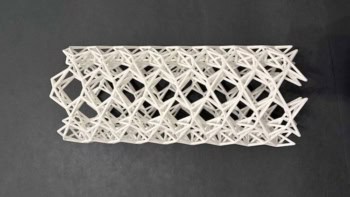Here’s two things that you probably don’t know about icicles — they are usually filled with liquid water and their shapes are defined by hot air. So says a theory put forth by Martin Short of the University of California at Los Angeles in his talk “How the icicle got its shape” (B7.00003).
Icicles elongate as water flows down the their sides and eventually freezes – but this is not the whole story. Instead of freezing rapidly, the water stays liquid for longer because the icicle is sheathed in warm rising air. The air is warmed by the latent heat given off when the water eventually freezes. This heating makes the icicle longer and thinner that it would otherwise be. The relatively warm liquid core also seems to help this elongation process.
Short’s theory allowed him to predict the shape of an icicle as a function of its length. He then trawled the Internet for photos of icicles, and sure enough the data agreed with his theory.
The strange thing is that stalactites (those things that grow from the roofs of caves) are exactly the same shape as icicles — but their formation doesn’t involve rising air or liquid cores.



